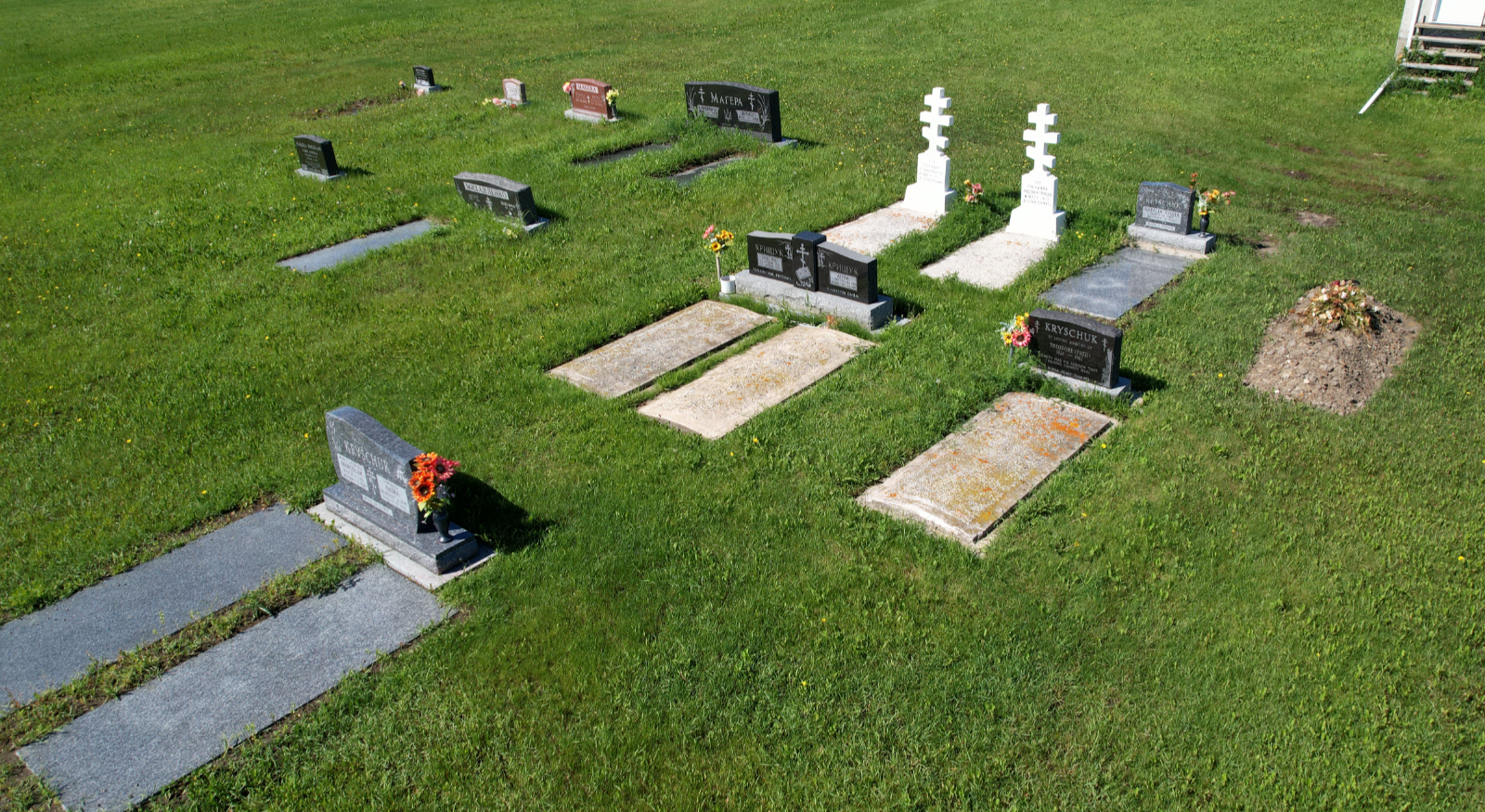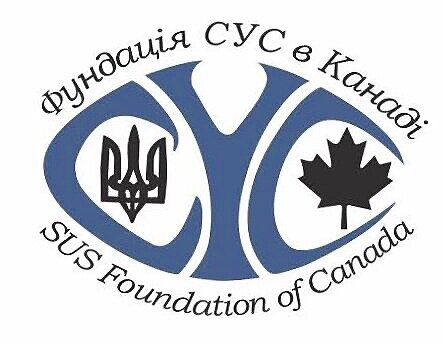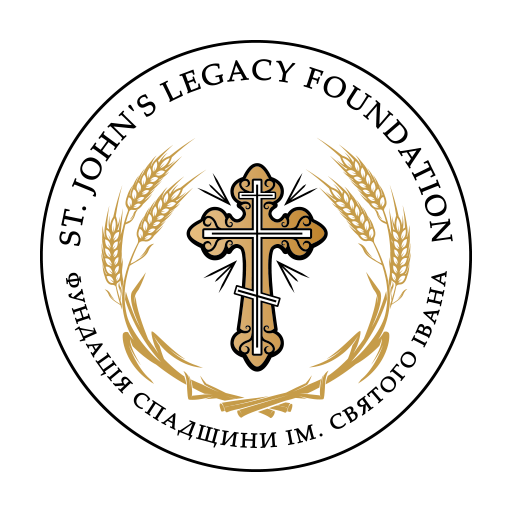The area around Fedorah was heavily settled by Ukrainians in the first decade and a half of the twentieth century. Orthodox settlers in the Fedorah district initially had to travel all the way to Edmonton to fulfill their spiritual needs, as for many years the closest place of worship was a Ukrainian Catholic church that had been erected in nearby Waugh in 1904. The first Orthodox liturgy was celebrated at Fedorah in 1928 by Rev. E. Olendy, after which services took place on an irregular basis at the local National Home. This hall was built in 1917-1918 by volunteers working under the direction of a Fedorah-area farmer who in the old country had been personally acquainted with the writer, Ivan Franko (1856-1916) – after whom the Fedorah Prosvita Society took its name. The original Ivan Franko Prosvita Society included Orthodox, Catholic and freethinking socialist members, but officially remained unaffiliated with any church or political group.
In 1933 an Orthodox congregation was formally organized at a meeting that was held following a Divine Liturgy. The founding executive elected at this gathering was headed by M.S. Ferbey and included Wasyl Belziuk and John Woywitka, with S. Ozipko, Steve Draginda and J. Kryschuk serving as elders. At another gathering held later that same year at the home of Wasyl Kostiw, it was decided to acquire land for a church and a cemetery. In April 1934 the congregation purchased two acres of land for a cemetery at NE 31-57-23 W4, three miles north of the present-day church, on the west side of Lily Lake Road. Wasyl Kostiw also offered to donate an acre on the corner of his quarter section opposite the cemetery site for a sanctuary. Subsequently, four deceased members of the congregation were interred at this burial ground, which was eventually fenced and had a cross erected on it. However, with time it was decided that the property had too many stones and was less than ideally situated for a church. There was growing opinion that the church should be located closer to the Ivan Franko Prosvita Hall, which continued to be used for services.
A further complication arose when in 1935 the Fedorah hall was destroyed by a fire that also consumed its library, chairs, and theatrical resources. The suspicious blaze was widely attributed to arson, as Ukrainians in the Fedorah-Waugh area were becoming increasingly divided along political lines. Undaunted by the difficult blow that they had suffered in the midst of the Great Depression, the Orthodox and Catholic members of the Ivan Franko Prosvita rallied together and rebuilt their hall within months of its destruction, so that by the fall it was once again operational. Fortunately, insurance paid for some of the lumber and the services of a professional carpenter, who was assisted in his work by local volunteers. Nevertheless, by this time the unity of the Prosvita membership was increasingly being tested by the religious differences between the Orthodox and the Catholics, which caused many heated discussions about the orientation of the hall and its use as a place of worship by the former.
In 1936, Ukrainian Catholics in the Fedorah area built a church dedicated to the Immaculate Virgin Mary on the other side of the road from the Ivan Franko Prosvita. In the mid-40s, this congregation acquired an old school for hosting parish functions, and consequently the Catholic members of the Ivan Franko Society gradually reduced their participation in the cultural and social activities of the Fedorah Prosvita. As a result, the Franko Hall essentially became identified with the Orthodox community, though on paper it always remained a formally independent body unaffiliated with any church.
Determined to finally have a proper place of worship, the Orthodox faithful of Fedorah in 1945 embarked on the construction of a brand-new church on property that they had obtained for a reasonable price through the efforts of Mike Kuzyk (it was owned by his mother) across the road from the Ivan Franko Prosvita. The modest tripartite sanctuary – which boasted a medium-sized dome over the entryway, and two smaller domes on towers framing the facade – was completed and consecrated in 1947, when it was dedicated to St. John the Baptist. In the meantime, founding members Joseph Kryschuk (President) and Nick Boyko (secretary) signed the Act of Incorporation and Bylaws on behalf the congregation on 6 July 1946, with Commissioner of Oaths, William Hawrysh, adding his signature a week later.
By 1949 seven liturgies a year were being celebrated at the church, a figure that remained fairly constant for the next decade and a half, although the congregation membership gradually declined from sixteen families in the late 1940s to just eight by 1957. The previous year, responsibility for St. John the Baptist Church had been transferred from the Radway district to priests serving the Greater Edmonton area.
A happy occurrence took place on 13 July 1958, when Fedorah native Meroslaw Kryschuk (born 1931) was consecrated into the priesthood in his home church by Metropolitan Ilarion, after which Fr. Meroslaw was assigned to pastoral duties in Myrnam, Alberta. Father Kryschuk’s maternal grandparents had settled in the Fedorah district in 1903, and his parents were among the founding members of the congregation.
The Cemetery
Originally at NE 31-57-23 W4. On 26 October 1966, the four burials at this site were solemnly disinterred and the remains were moved to the cemetery that was established on the church property. The new cemetery had been consecrated on 14 August, when a cross was also dedicated by Fr. I. Kulish.

Play Memory Eternal Chant
GPS Co-ordinates: 53.936129, -113.396998
Affiliation: Ukrainian Orthodox Church of Canada





